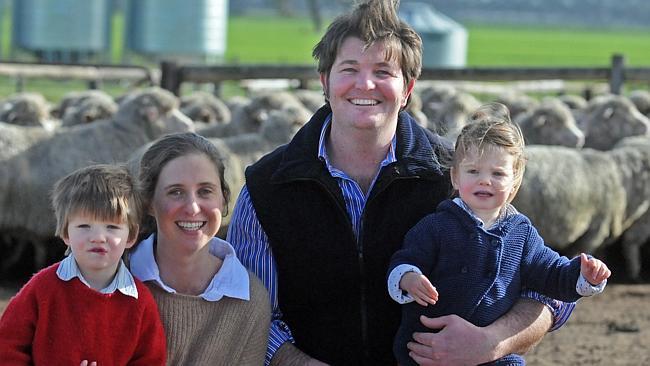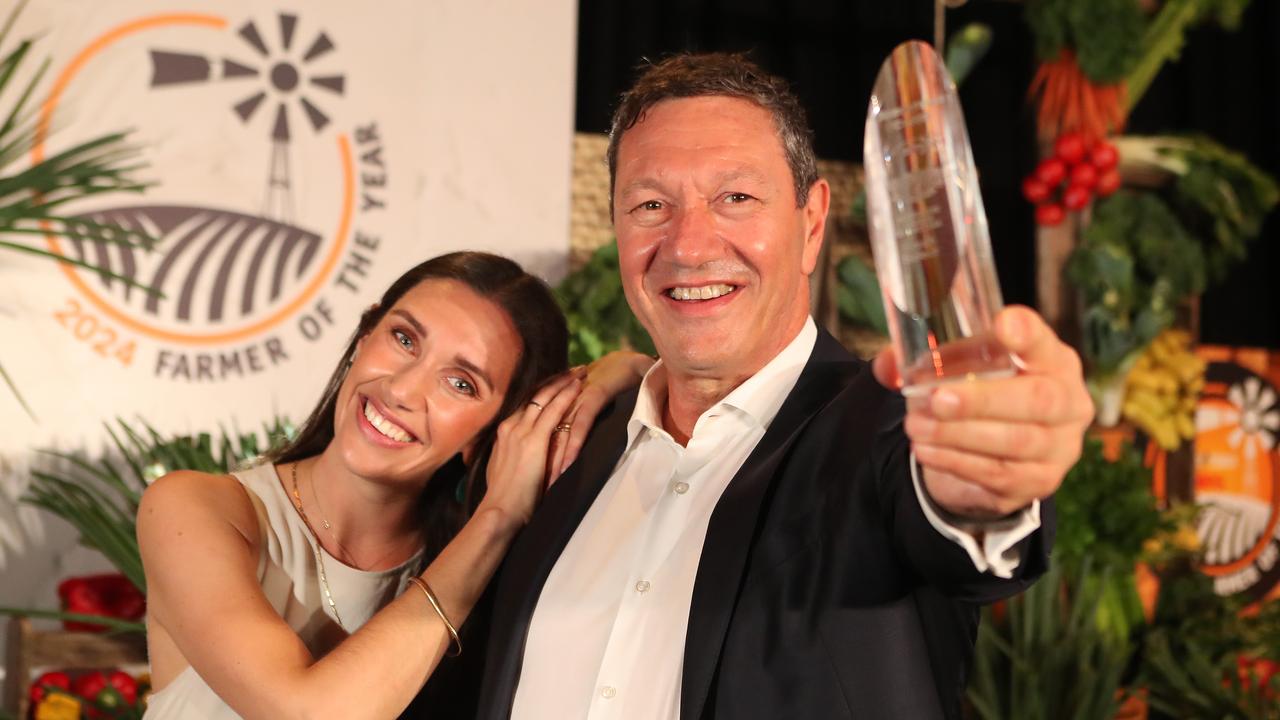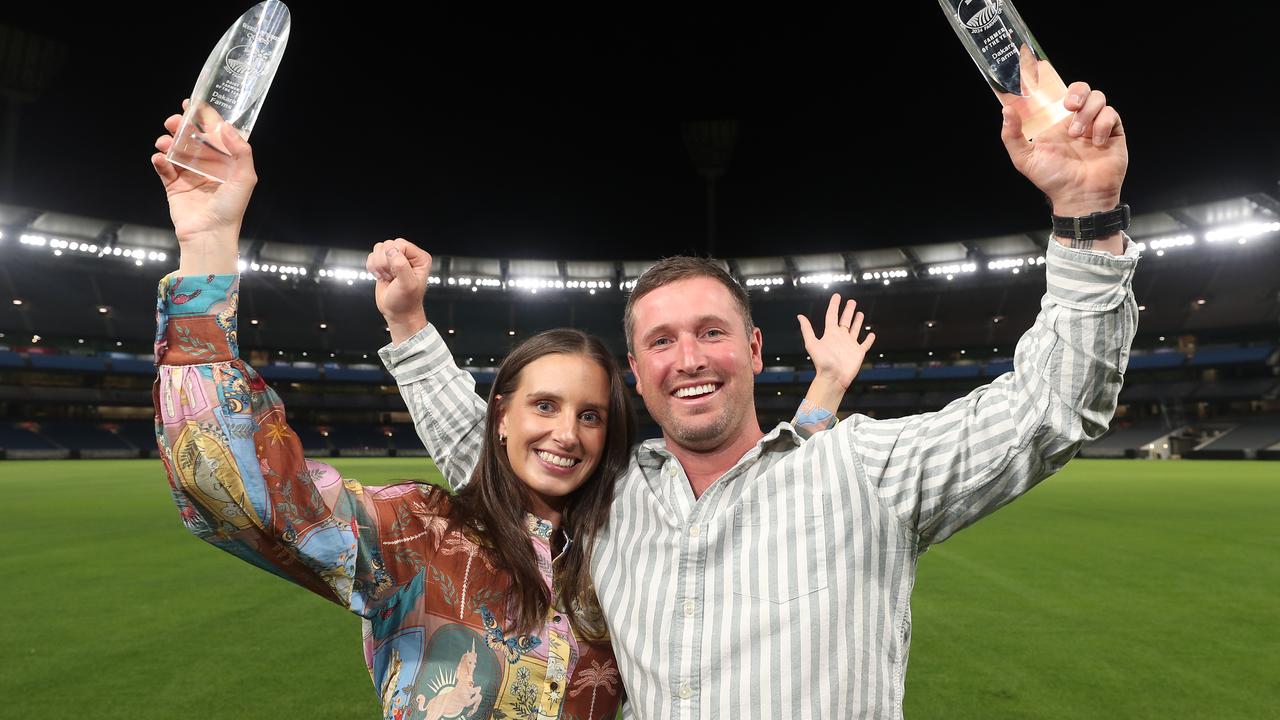Apsley farmer Richard Hawker switches from wool to lamb
HE comes from one of Australia’s oldest wool growing families.

HE comes from one of Australia’s oldest wool growing families.
But traditional ties have not held Apsley farmer Richard Hawker back from making a bold move to pursue a more profitable future for his young family — switching from wool-producing Merino sheep to a composite, meat-focused flock.
Richard runs the family’s 2600ha property with wife Freya under a lease arrangement with his parents, David and Penny.
David is a former Liberal MP for Wannon, who inherited the seat from former Prime Minister the late Malcolm Fraser in 1983 before retiring in 2010. He was House of Representatives speaker from 2004 until 2007.
The Hawker family’s association with politics and wool is about as long as they come in Australia.
Richard’s great, great grandfather, George Charles Hawker, was a settler, grazier and wool producer at Bungaree Station, near Clare in South Australia, and speaker of the South Australian House of Assembly in the mid-1800s.
But despite the family’s 175 years of dedication to wool, this year — for the first time — not one of the Hawkers’ 14,500 ewes was mated to a Merino ram.
SIGN OF THE TIMES
RICHARD said making the choice to get out of Merinos was “hard to start with”. “But now the decision has been made we’re happy with the move and looking forward to what’s to come,” he said.
When asked what George Hawker might think of the move, Richard said: “I tend to think he’d probably be saddened by the state of the wool industry, but happy we’re making good business decisions.”
Richard expects the switch to composite sheep will “in our situation, and for our farm, probably result in up to 35 per cent more in enterprise profit”, mostly due to an expected decrease in animal health costs and an increase in income.
The current Apsley property, Newlands, has been in Hawker hands since 1953. Its stone woolshed was built in 1865 and the family estimates three million sheep have been across its boards.

SOLID GROUNDING
RICHARD studied at Marcus Oldham College before returning to farm nine years ago.
Since then, he has embarked on a mission to improve the farm’s productivity, beginning with subdivision of paddocks, improved water reticulation and better labour efficiency.
“There were four full-time employees when I came home, now there’s myself and one workman running about 14,000 DSEs (dry sheep equivalents) per labour unit,” he said.
Richard said finding suitable labour was the “hardest part”, so when the right person came along, it was important to “look after them”.
He has sought to minimise overheads by owning “very little” plant and machinery, instead contractors are used for many activities other than stock work.
The farm has been divided into 70 paddocks, each averaging 33ha and almost all linked by three laneways, improving labour efficiency.
The cropping enterprise was 600ha, but has been wound down because more money could be made from sheep, he said.
MEAT THE MARKET
THE July-lambing ewe flock consists of 9000 Merino, 3500 composite and 2000 first-cross ewes and most were joined to maternal rams this year. Cattle are traded opportunistically. “I think the outlook is better for lamb than it is for wool,” Richard said.
He said the wool market had enjoyed peaks but suffered volatility, whereas lamb prices were strong and the outlook for demand, bright.
“We’ve always bred our own replacements using Merino rams but now we’ll breed replacements using composite sires and have a self-replacing maternal meat sheep flock,” Richard said.
The goal for the prime lamb enterprise is to produce 22kg carcass weight of lamb per hectare per 100mm rainfall, he said.
“In our area, we see the main profit drivers as lambing percentages and stocking rate, and working to maximise both,” he said. “There are other factors too, like lamb prices, but lambing percentages and stocking rates are things which we have more control over.”

MAKING A MARK
LAMB marking rates were about 80 per cent from pure Merino ewes, but Richard said the composites should get to 130-140 per cent.
So far, composite ewes that have been bought in scanned-in-lamb at 175 per cent, indicating 140 per cent lambing percentages should be achievable.
Lambs are sold either direct to processor or via private sale to restockers and “just a handful” are sold through saleyards. Richard uses Yarram Park and Chrome composite rams after having done much research into the breeding objectives of both.
With the new focus sharply on meat production, Richard has also revved up his pastures and worked to solve seasonal feed gaps to ensure lambs can be grown out without having to buy in too much costly grain.
Five years ago he introduced spring-sown brassicas summer crops.
Brassicas serve the dual purpose of cleaning up ryegrass, after winter cropping and before sowing perennial phalaris pastures, and of providing green summer feed for growing out lambs.
IT MAKES CENTS
AS part of last month’s Grasslands Society of Southern Australia annual conference, outgoing president James Whale, a consultant with Meridian Agriculture, analysed economics of summer cropping at Newlands compared to growing oaten hay crops to prepare for pasture renovation and grain-feeding lambs.
He found in an average or good year, there was a benefit of $85 to $235/ha in growing brassicas.
Richard said “it only needs one good summer rain and you will then get a couple of months of grazing from it”.


